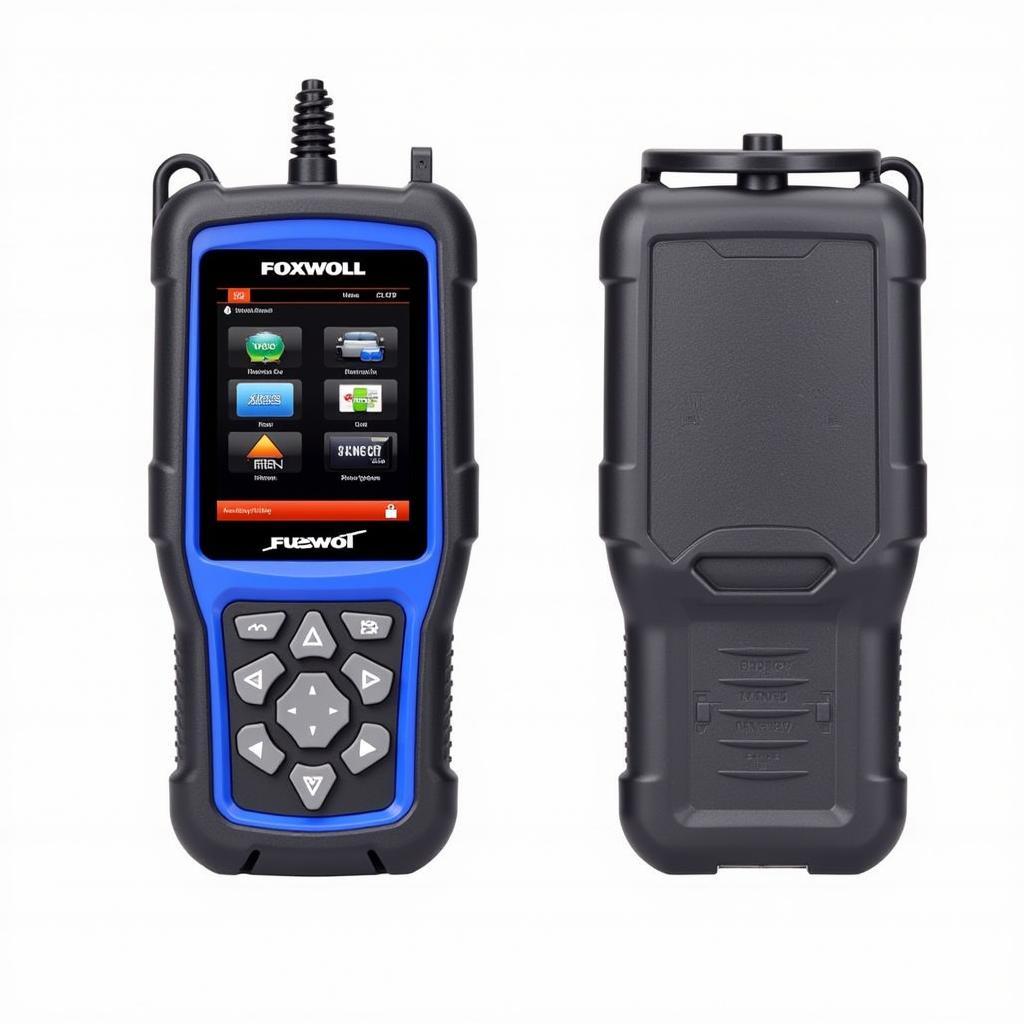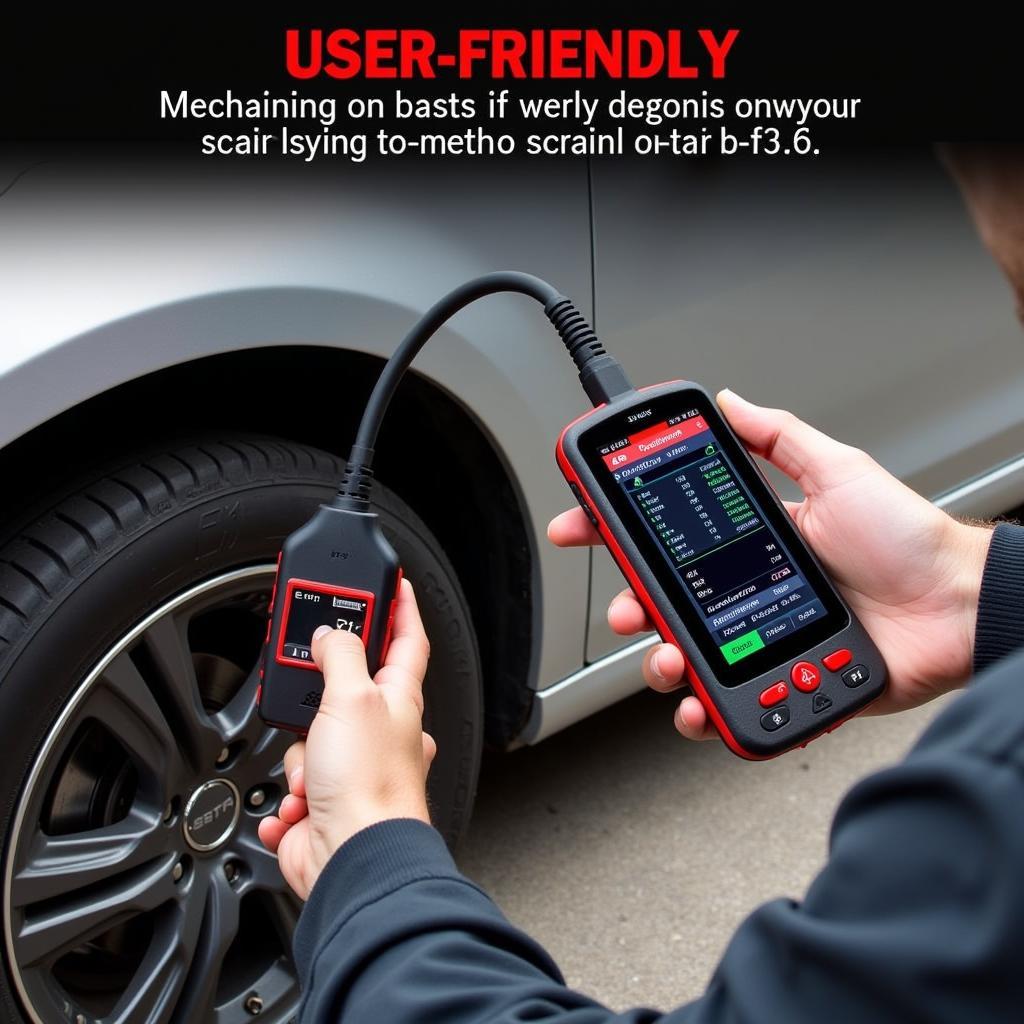You’re experiencing overheating issues with your car, and you suspect the thermostat might be the culprit. You’ve heard of OBD2 scanners and their diagnostic prowess, particularly the Foxwell brand. Now you’re wondering, “Can I Check The Thermostat With A Foxwell Obd2 Scanner?” The answer, in short, is yes, but with a few caveats.
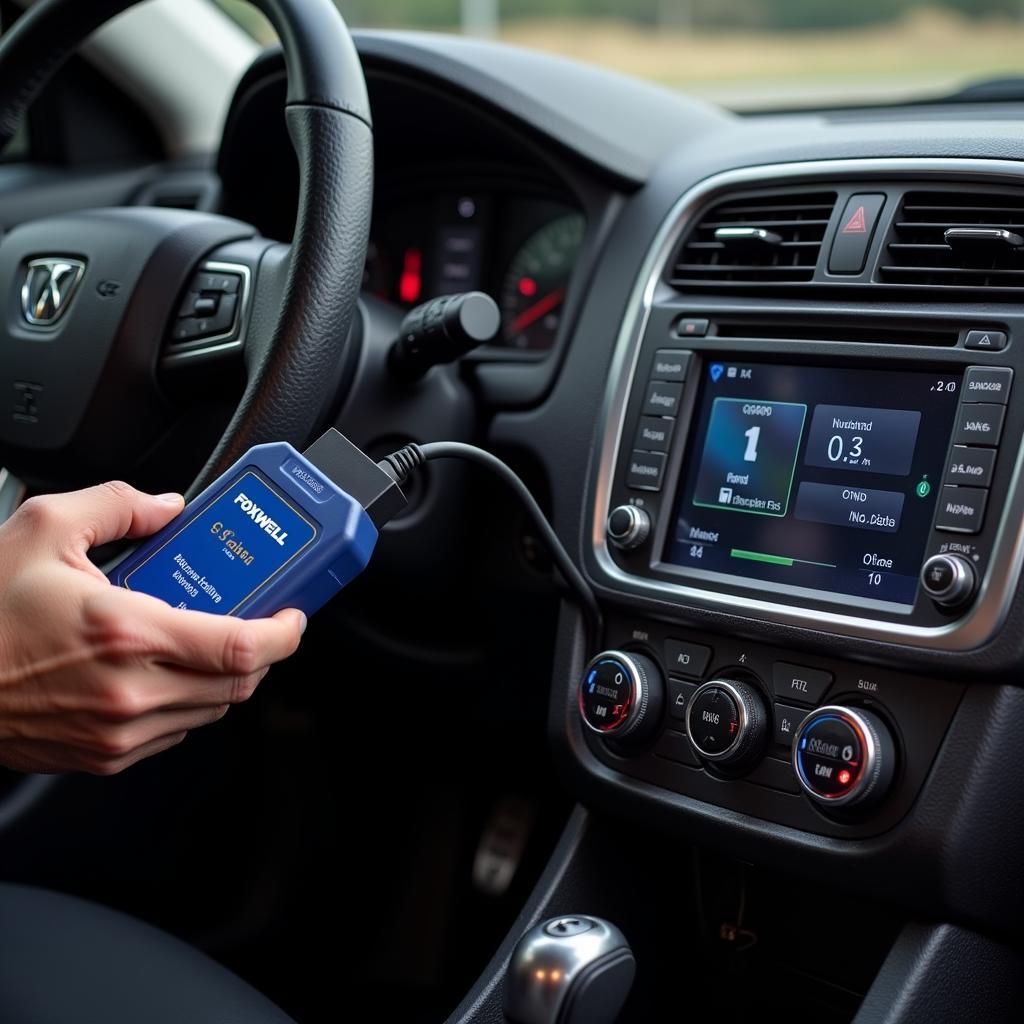 Foxwell OBD2 Scanner Connected to Car
Foxwell OBD2 Scanner Connected to Car
Understanding the Role of Your Car’s Thermostat and OBD2 Scanners
Before we delve into the specifics of using a Foxwell OBD2 scanner for thermostat diagnostics, it’s crucial to grasp the basics.
Your car’s thermostat is a small but mighty valve that regulates the flow of coolant between the engine and the radiator. Its primary function is to ensure the engine reaches and maintains its optimal operating temperature. When the engine is cold, the thermostat remains closed, allowing the engine to warm up quickly. As the engine heats up, the thermostat opens, allowing coolant to flow through the radiator and prevent overheating.
OBD2 scanners, on the other hand, are handheld devices that plug into your vehicle’s OBD2 port, typically located under the dashboard on the driver’s side. They communicate with your car’s computer, retrieving diagnostic trouble codes (DTCs) and live data from various sensors, including the Engine Coolant Temperature (ECT) sensor.
How a Foxwell OBD2 Scanner Can Help Diagnose Thermostat Issues
While a Foxwell OBD2 scanner can’t directly test the thermostat itself, it can provide valuable information that points to a faulty thermostat. Here’s how:
-
Reading Engine Coolant Temperature: A Foxwell scanner can display the live reading from the ECT sensor. If the temperature reading remains consistently low even after the engine has been running for a while, it could indicate a stuck-open thermostat.
-
Detecting Temperature Fluctuations: Sudden and significant temperature swings, especially when the engine is idling, can also be a sign of a malfunctioning thermostat. A Foxwell scanner can help you monitor these fluctuations in real-time.
-
Retrieving Diagnostic Trouble Codes: In some cases, a faulty thermostat might trigger specific DTCs related to engine temperature. A Foxwell scanner can read these codes, providing further clues about the thermostat’s condition.
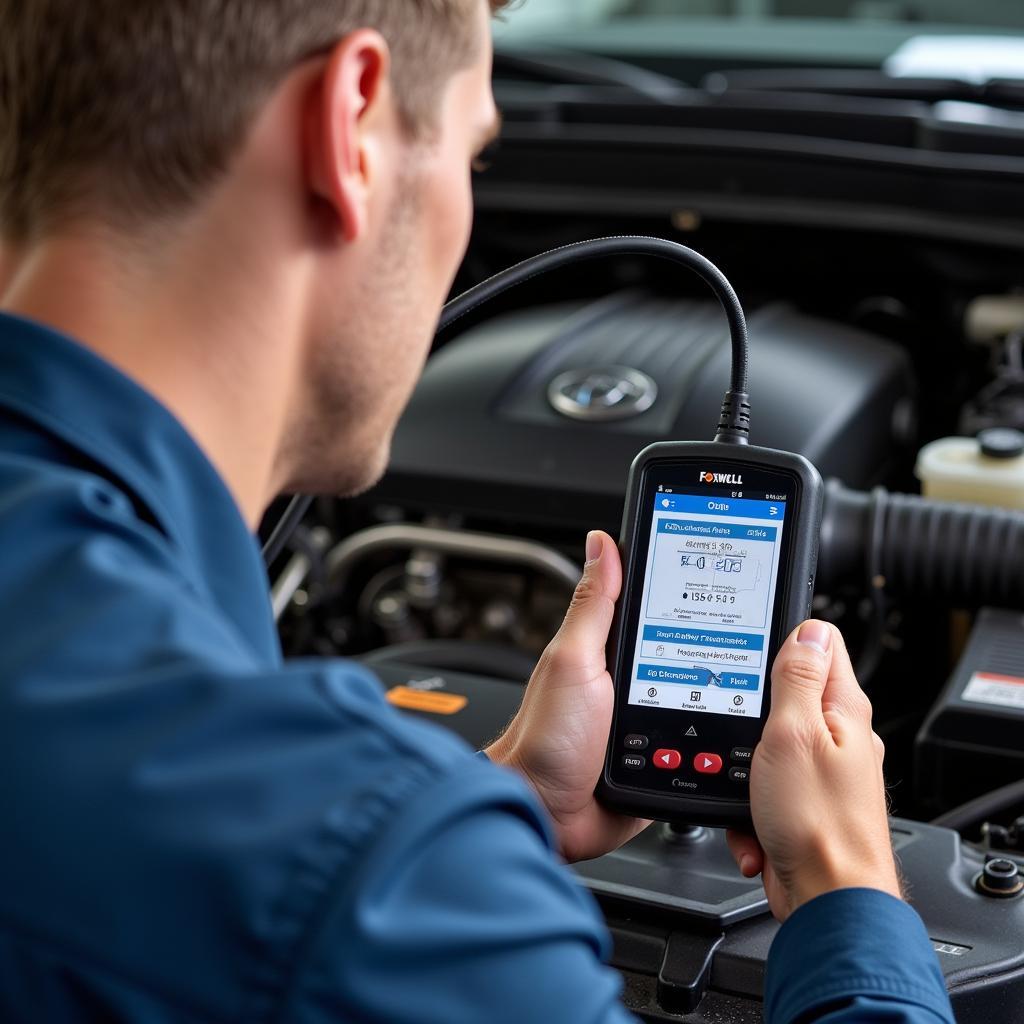 Mechanic Using Foxwell Scanner to Diagnose Car
Mechanic Using Foxwell Scanner to Diagnose Car
Interpreting the Data: What to Look For
Here’s a more detailed look at how to interpret the data from your Foxwell OBD2 scanner:
-
Consistently Low Engine Temperature: If the ECT reading remains significantly lower than the normal operating temperature (usually around 195-220 degrees Fahrenheit), it could indicate a stuck-open thermostat. This means the coolant is constantly flowing through the radiator, preventing the engine from reaching its optimal temperature.
-
Erratic Temperature Readings: Sudden temperature drops or spikes, especially when the engine is idling or under light load, can also point to a faulty thermostat. This could indicate the thermostat is sticking intermittently, causing inconsistent coolant flow.
-
Relevant Diagnostic Trouble Codes: While not always present, some DTCs that might suggest a thermostat issue include:
- P0128 – Coolant Thermostat (Coolant Temperature Below Thermostat Regulating Temperature)
- P0125 – Insufficient Coolant Temperature for Closed Loop Fuel Control
Beyond the Scanner: Additional Checks for Thermostat Problems
While a Foxwell OBD2 scanner can provide valuable insights, it’s important to remember that it’s just one tool in your diagnostic arsenal. Here are some additional checks you can perform:
-
Visual Inspection: Inspect the thermostat housing and surrounding hoses for any visible leaks, cracks, or damage.
-
Warm-Up Test: As the engine warms up, carefully feel the upper radiator hose. If it remains cold for an extended period while the engine temperature rises, it could indicate a thermostat that’s not opening properly.
Expert Insights
“Remember, while a Foxwell OBD2 scanner is a powerful tool for diagnosing car problems, it’s essential to use it in conjunction with your knowledge and other diagnostic methods,” advises John Smith, a seasoned automotive electrical engineer with over 15 years of experience. “Don’t solely rely on the scanner’s readings. Always consider other symptoms and perform additional checks to confirm your diagnosis.”
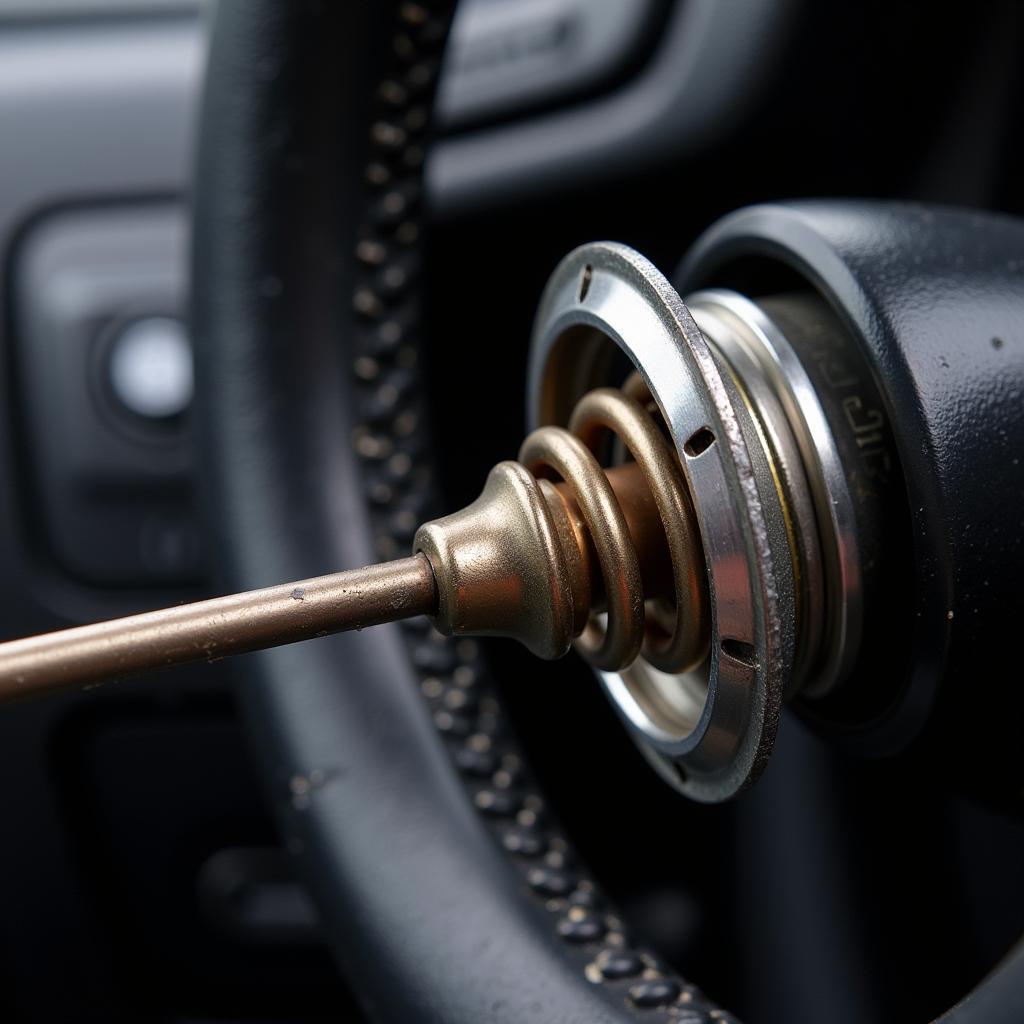 Close Up of a Car Thermostat
Close Up of a Car Thermostat
Still Unsure? Seek Professional Help
Diagnosing car problems can be tricky, even with the help of advanced tools like a Foxwell OBD2 scanner. If you’re unsure about your findings or uncomfortable working on your vehicle, it’s always best to consult a qualified mechanic. They have the expertise and experience to accurately diagnose and repair any issues with your car’s cooling system, including a faulty thermostat.
Connect with ScanToolUS for Expert Assistance
For all your automotive diagnostic needs, trust the experts at ScanToolUS. We offer a wide range of high-quality OBD2 scanners, including the Foxwell brand, to help you keep your car running smoothly. Contact us today at +1 (641) 206-8880 or visit our office at 1615 S Laramie Ave, Cicero, IL 60804, USA.
Frequently Asked Questions
1. Can I use any OBD2 scanner to check the thermostat?
While most OBD2 scanners can read basic engine data like coolant temperature, not all scanners can read live data or specific DTCs related to the thermostat.
2. How often should I check my car’s thermostat?
It’s a good idea to have your car’s cooling system inspected by a mechanic as part of your regular maintenance schedule.
3. Can I replace the thermostat myself?
While replacing a thermostat is a relatively straightforward procedure, it’s essential to have some mechanical aptitude and the right tools.
4. What happens if I drive with a bad thermostat?
Driving with a faulty thermostat can lead to engine overheating, reduced fuel efficiency, and potential engine damage.
5. How much does it cost to replace a thermostat?
The cost of replacing a thermostat varies depending on the make and model of your vehicle and labor costs in your area.

